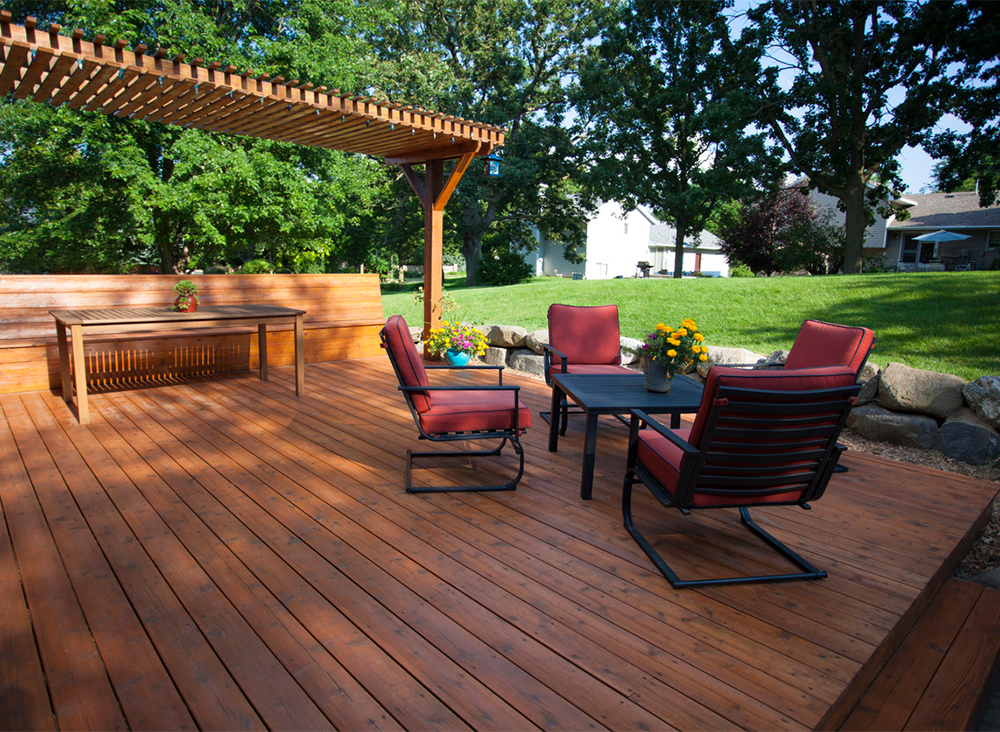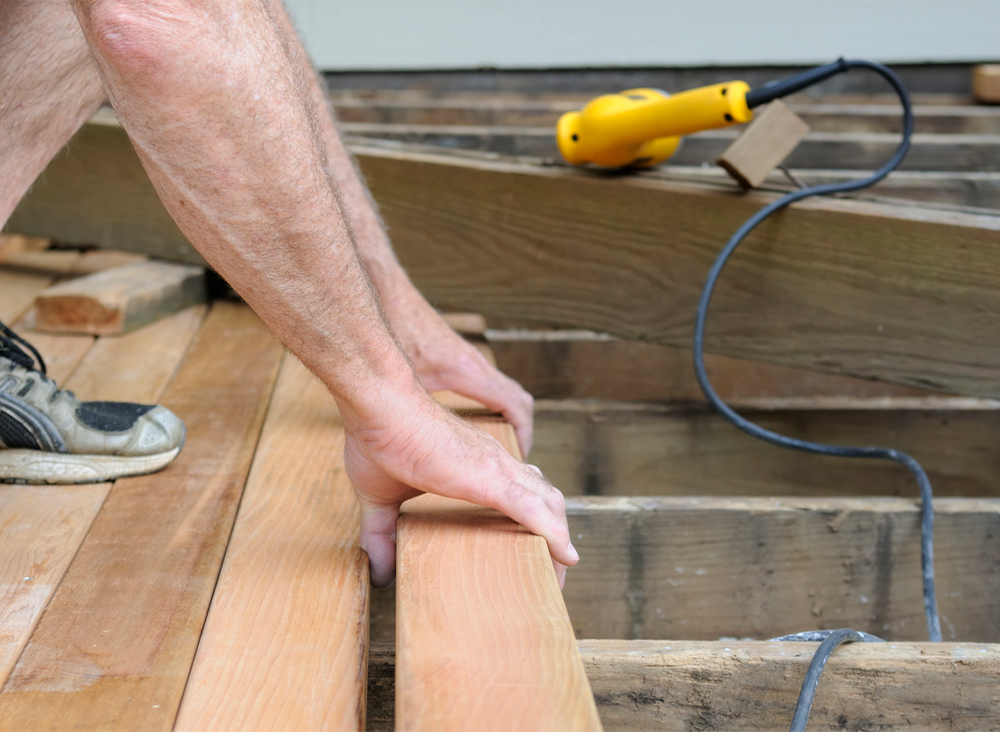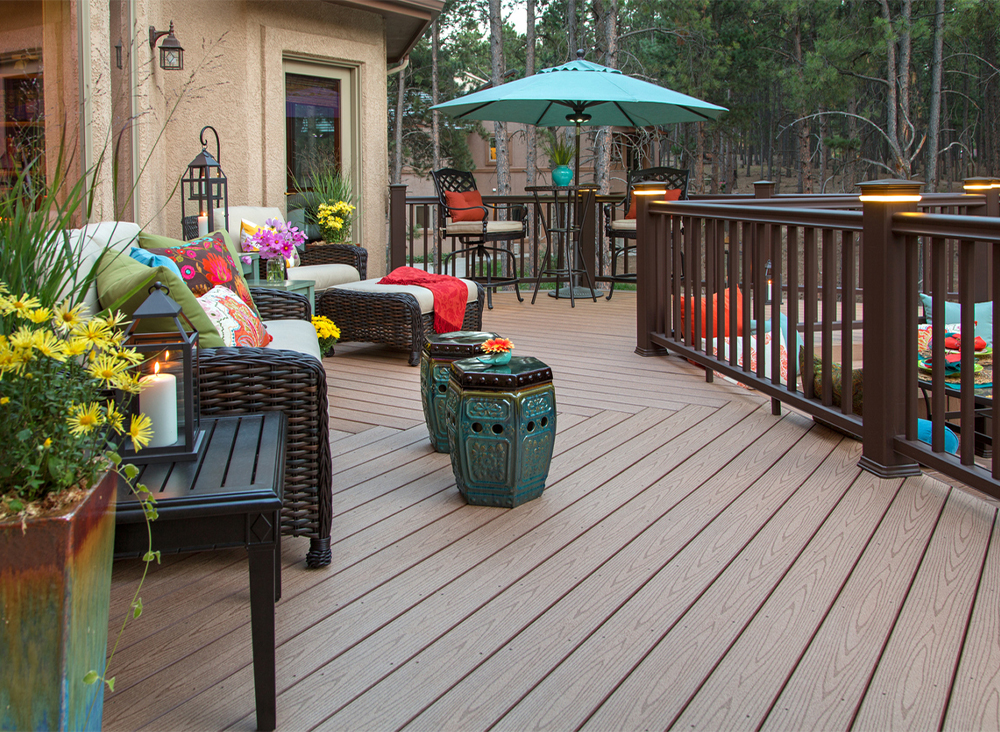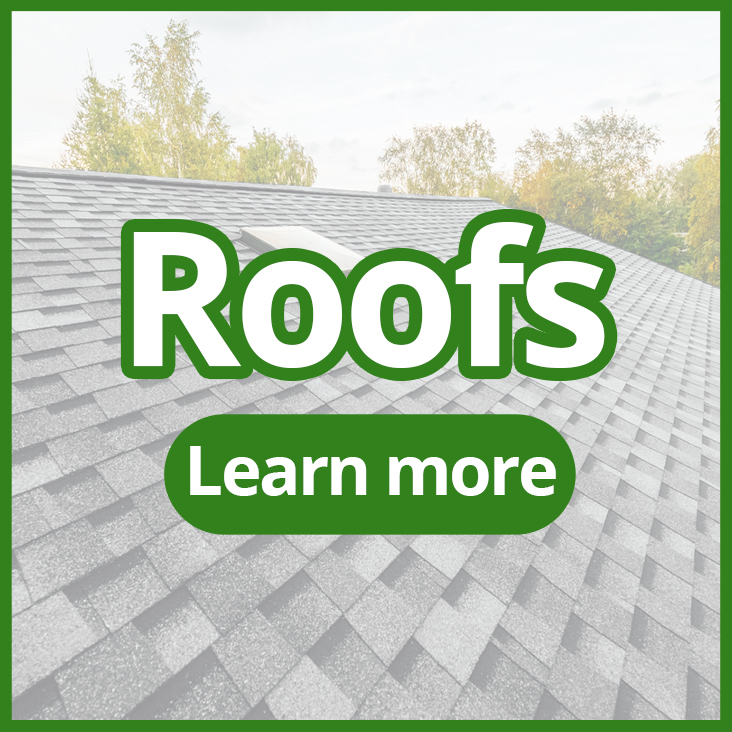Decks
There are many options to choose from and consider when selecting the material from which to build your new deck! The most common types and descriptions to help you choose the right material that’s best for you are listed below:
Pressure Treated Wood

Pros
Affordable
Insect resistant
Rot resistant for up to 40 years by some suppliers
Stronger wood that is more difficult to scratch or dent
Looks better longer when maintained
Cons
High maintenance (requires some type of attention every 1 to 2 years)
Splits easily
Warps easily if not protected with paint , sealer, or stain
Needs to weather 3 to 6 months before applying protection of your choice
Requires clothing to protect hands, arms, face, and lungs when cutting
The saw dust could kill your flowers ,vegetables or contaminate water supply
Corrosive to improper fasteners
Pressure Treated Wood

Pros
Affordable
Stronger wood that is more difficult to scratch or dent
Insect resistant
Looks better longer when maintained
Rot resistant for up to 40 years by some suppliers
Cons
High maintenance (requires some type of attention every 1 to 2 years)
Requires clothing to protect hands, arms, face, and lungs when cutting
Corrosive to improper fasteners
Splits easily
Warps easily if not protected with paint , sealer, or stain
The saw dust could kill your flowers ,vegetables or contaminate water supply
Very hazardous chemicals
Needs to weather 3 to 6 months before applying protection of your choice
Lifetime guaranties
Energy savings
Multiple options to choose from
Lifetime guaranties
Energy savings
Multiple options to choose from
Cedar Wood

Pros
Nice deep color when new
Naturally resistant to most insects
Boards tend to lay flatter
Resists moisture absorption
Less warping, twisting, and splitting
Cons
High maintenance (requires some type of attention every 1 to 2 years)
Soft wood (dents and scratches easily)
Moderately priced (not a low budget deck)
Looks tired after 10 years but last about 15 to 20 years
Prone to wood borer bees
Does not like shady damp areas- it will deteriorate
Cedar Wood

Pros
Nice deep color when new
Boards tend to lay flatter
Less warping, twisting, and splitting
Naturally resistant to most insects
Resists moisture absorption
Cons
High maintenance (requires some type of attention every 1 to 2 years)
Moderately priced (not a low budget deck)
Soft wood (dents and scratches easily)
Prone to wood borer bees
Looks tired after 10 years but last about 15 to 20 years
Does not like shady damp areas- it will deteriorate
Composite Decks

Pros
Looks good
Insect & Water resistant
Low maintenance (clean with eco-friendly detergent once a year)
Fades evenly
Strong
And no splinters in bare feet ( OH YEAAAH ! )
Doesn’t dent easily with furniture
Cons
Expensive
Can sag and warp
Can look fake and cheap depending on brand
Can be very slippery depending on brand
Not mold and mildew resistant, especially in shaded areas
Composite Deck

Pros
Low maintenance (clean with eco-friendly detergent once a year)
Looks good
Fades evenly
Insect & Water resistant
Wont splinter or rot
Can be stained after 4 to 6 months on most brands if you wish
And no splinters in bare feet ( OH YEAAAH ! )
Strong & doesn’t dent easily with furniture
Cons
Expensive
Can look fake and cheap depending on brand
Can sag and warp
Not mold and mildew resistant, especially in shaded areas
Can be very slippery depending on brand
From the consultation to the install the whole experience was delightful!
Dave went over, in detail, the plus and minus of the different levels of window we could purchase (no pressure) and what we would expect from start to finish with the project. I was hoping for windows to be done by a certain time and they were finished long before then! I love, love, love how I was treated! The installers were friendly, even after my 100 questions for them. Would HIGHLY recommend this company!!!
-MAGGIE K
Would hire again!
They recently installed an egress window and I’m very satisfied with the job they did. The job was done very quickly and they went the extra mile to make sure we were completely happy. Would hire again!
– GREG W
From the consultation to the install the whole experience was delightful!
Dave went over, in detail, the plus and minus of the different levels of window we could purchase (no pressure) and what we would expect from start to finish with the project. I was hoping for windows to be done by a certain time and they were finished long before then! I love, love, love how I was treated! The installers were friendly, even after my 100 questions for them. Would HIGHLY recommend this company!!!
-MAGGIE K
Would hire again!
They recently installed an egress window and I’m very satisfied with the job they did. The job was done very quickly and they went the extra mile to make sure we were completely happy. Would hire again!
– GREG W




